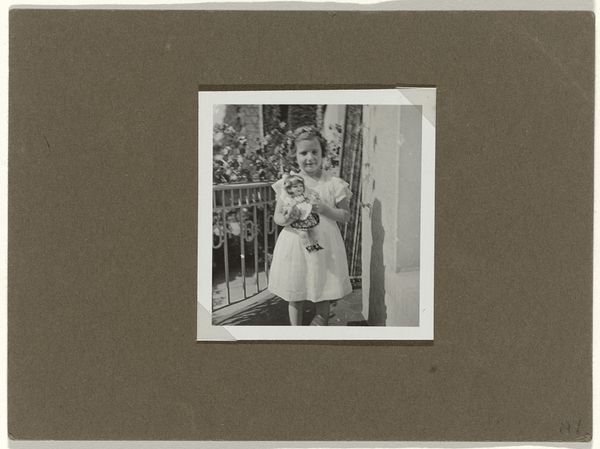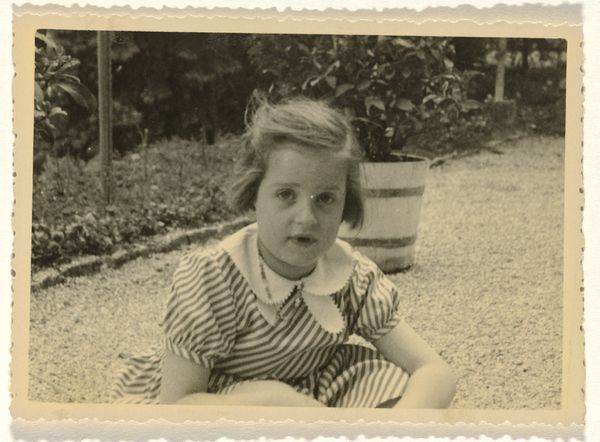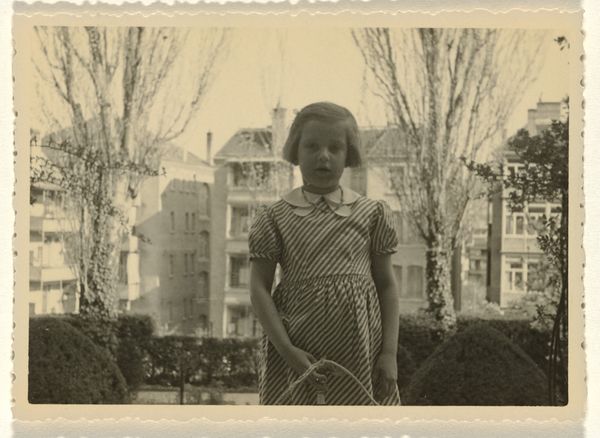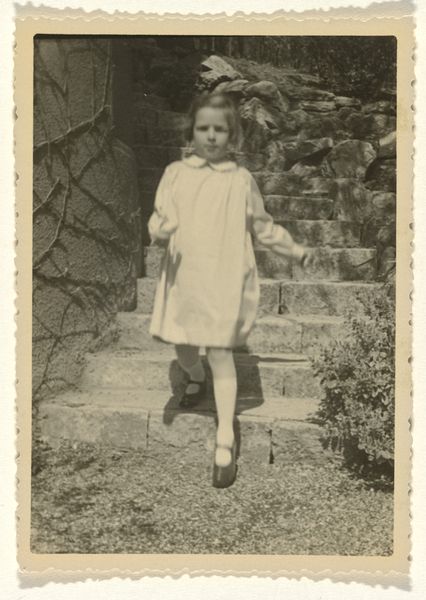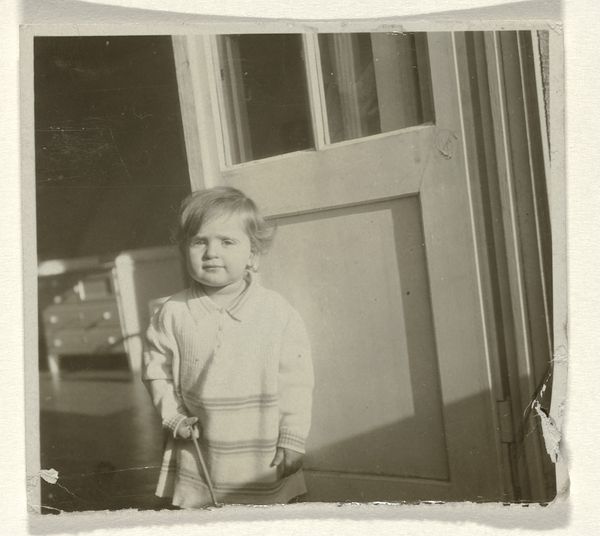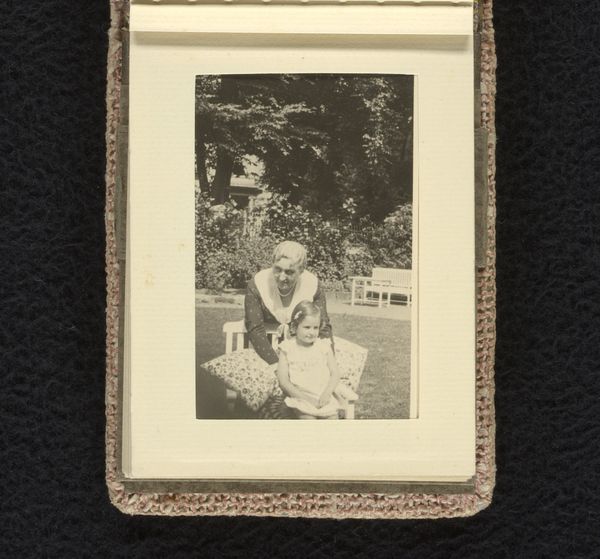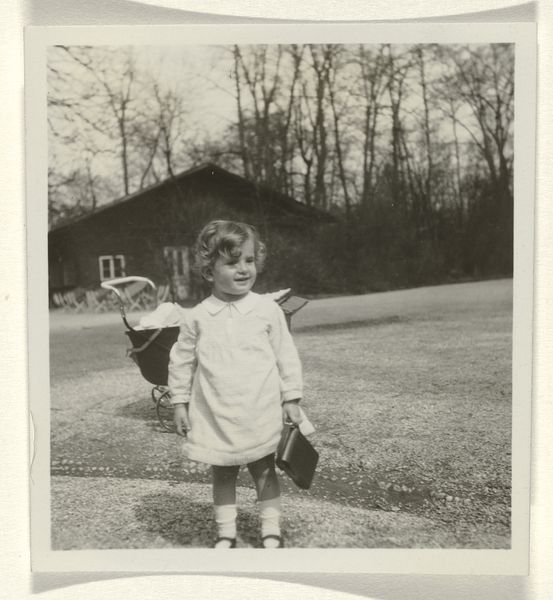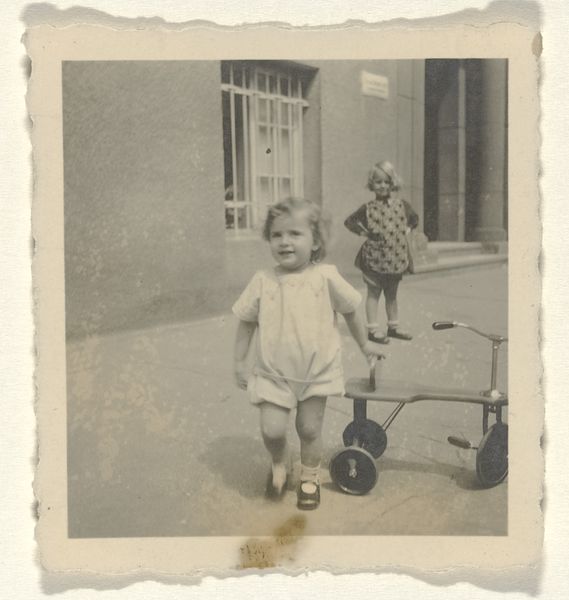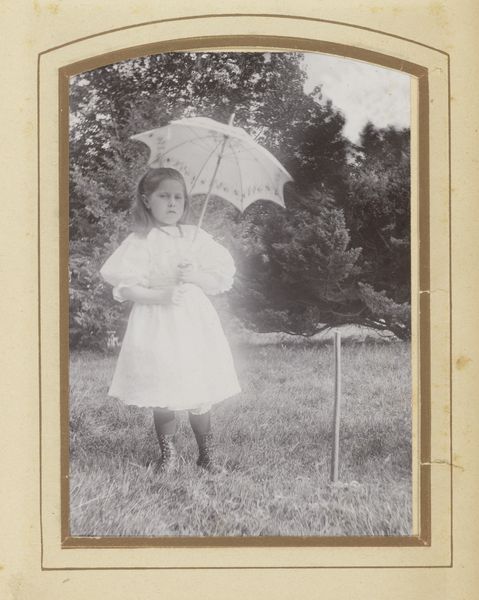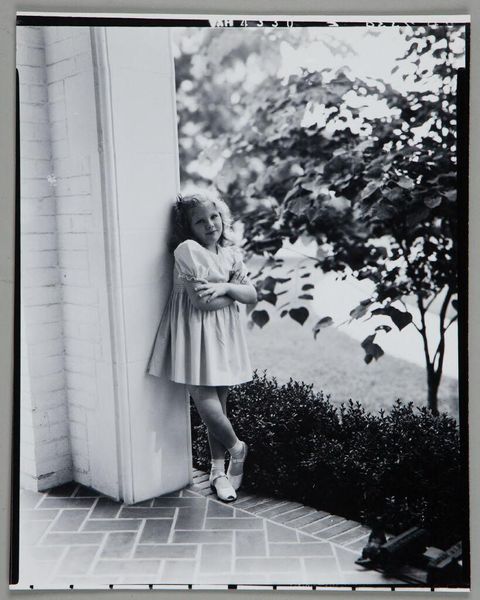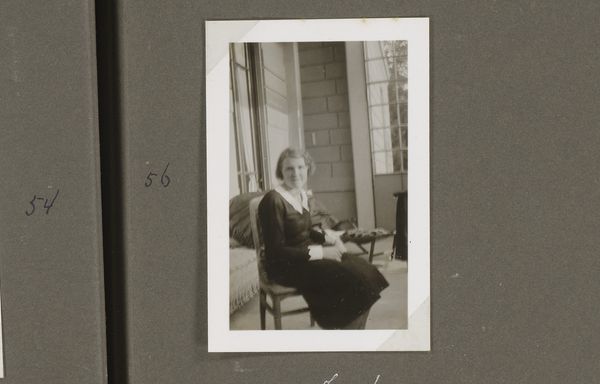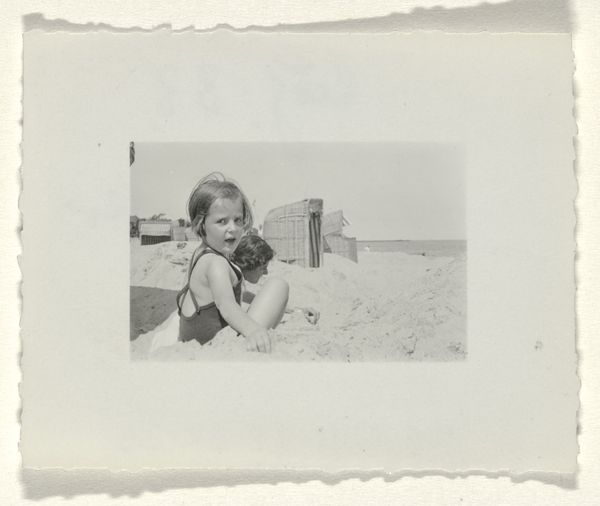
Isabel Wachenheimer eet een perzik op een ligstoel op een terras in Engelberg, augustus 1935 1935 - 1938
photography, gelatin-silver-print
landscape
photography
historical photography
gelatin-silver-print
genre-painting
Dimensions: height 95 mm, width 65 mm
Copyright: Rijks Museum: Open Domain
Curator: The somber mood really strikes me here. Even with the idyllic setting of what appears to be a sunny terrace, there is a definite sense of gravity, almost unease. Editor: Indeed. The photograph you are observing, a gelatin-silver print made between 1935 and 1938, is entitled "Isabel Wachenheimer eet een perzik op een ligstoel op een terras in Engelberg, augustus 1935," or, "Isabel Wachenheimer eating a peach in a deckchair on a terrace in Engelberg, August 1935." Curator: Thank you, yes, Isabel's placid pose in a deckchair disrupts any straightforward interpretation. Considering the time it was taken, are we perhaps invited to ponder ideas around privilege, mobility and childhood in the face of encroaching fascism in Europe? Her nonchalant act of enjoying a simple peach seems laden with the anxieties of an uncertain era. Editor: That contrast is precisely what I find compelling here, that almost crystalline sense of light and shadow in rendering textures and surfaces, from the young girl's dress, and the hexagonal terrace, to the dense foliage in the background. The geometry and stark tonal shifts speak volumes in their visual order. Curator: Right. Let's think about the young girl for a moment. Children are not apolitical; rather, childhood becomes another space in which social and political tensions play out. Even the act of taking this photograph positions this child within a particular framework. Editor: And speaking of the framework, let's consider how the formal qualities of this artwork lend it meaning. The somewhat off-center composition creates an active tension; the dark and light playing out on the girl, set against the verdant dark of foliage beyond a metal railing, sets up a compelling dichotomy between the terrace idyll and what may lie beyond. The photographer directs our focus to these shapes. Curator: Exactly, but consider the context – photographs are never neutral documents of history; instead, they function as powerful reminders that the everyday, the banal, can be intensely political, and even perilous. This ordinary moment then transforms into an eloquent commentary on an extraordinarily unsettling period. Editor: Well put. It goes to show how a seemingly straightforward portrait can reveal layers of aesthetic sophistication and deeper meaning if you really examine its construction. Curator: Absolutely; these stark portraits allow us to view children with greater analytical rigour; we begin to realize that, far from innocent bystanders, they, too, navigate the ebbs and flows of global crises, and this photo reveals it with uncanny directness.
Comments
No comments
Be the first to comment and join the conversation on the ultimate creative platform.

